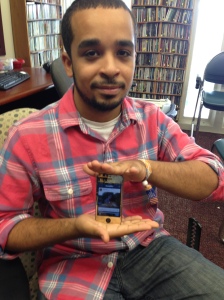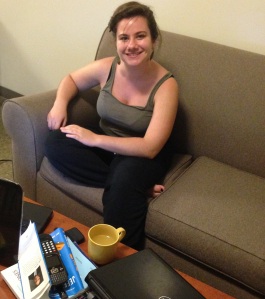A look into how college students get their daily fill
The social media boom, it’s no secret, has developed over the past decade throughout the Internet, companies and individuals of all ages. It has taken over porn as the number one activity on the web and according to a 2013 Pew Research Center’s Internet & American Life Project survey, 72 percent of adult Internet users are using social media websites–a major increase from the five percent in 2005. While these media forms continue to grow, others such as print journalism has dwindled down to a much lower existence and relevancy among consumers. With a decrease in one of the most historically used forms of media, it brings about the question of how are we exactly getting the news–that is if we bother to explore at all.
As current college students preparing to graduate into the world, we are the generation that grew up with drastic technology change and as the nation’s future we will soon become the ongoing present. We are also the perfect example of how this great technology has placed positive and negative effects, from instant and easy access of worldwide news to short attention spans that struggle to absorb information. A majority fall into the category of students that tend to stray from breaking news and renowned articles–but to what extent?
I interviewed three University at Albany seniors from different backgrounds and majors to find out their daily intake and how connected they are through social media.

Manny Capellan holds up his phone to show off his Tumblr app.connected they are through popular social medias.
The first pattern I found was that none of the students had a specific news routine and all of them admitted to not reading print journalism and following television news programs. Manny Capellan, a public policy major from Bronx, explained his occasional reading of the New York Post when at home but holds little interest in local and Albany news during his time at school. After interning for The New York State Assembly he developed an interest in politics , using online sources of BBC and CNN, but even then he finds himself going through phases and resorts to “googling” for reading urges.
“For three weeks I’ll read a lot but then after a while I’ll give up. I have a floating interest,” said Capellan.
Capellan also expressed his distrust towards the media, especially with negative coverage that he feels Albany students and his fraternity are unfairly portrayed through. Steve Minster, a psychology and public health major from Staten Island, also holds similar feelings towards media.
“I used to read Yahoo articles where I found they would contradict stuff,” said Minster who believes that news outlets are too subjective.
Such distrust is not uncommon and according to a Pew Research survey the percentage of distrust towards media has nearly doubled from the amount in 1985–most finding the news to be biased and inaccurate.
One thing for certain is that all three students use social media as their main source for findings. While Capellan exclaimed the visual and blog based Tumblr as his favorite, Minster explained that he has no need to check news sites since he can find updates and article postings through his heavily used Facebook.
“It’s rare that I can’t gather enough info from Facebook,” said Minster, searching through Google as his second choice.
Teresa Castillo, a documentary studies student from Buffalo, is also an avid Facebook user for news worthy updates but checks other news sites as well–her favorite being The New York Times website for narrative pieces.
“They have really good videos, I don’t like it for hard-hitting news but I like narrative descriptions, photography and multimedia. I also don’t believe in buying newspapers because that’s wasting paper” said Castillo.
Castillo maintains a double minor in Spanish and Latin American and Caribbean studies, which leads her to explore news from Latin countries and keeps updated on the region in Mexico she studied abroad in. She also described that the best way to find articles on Facebook is to like the news pages themselves and receive their updates directly from the feed–her favorites being NPR, Upworthy and The Onion.
Although Castillo breaks the stereotype of the uninformed college student, her interest of studies play a large part in her drive for information but she also admits that time and short attention span are the biggest enemies for reading and breaking news consumption. While there is plenty of research that shows negative effects of social media, these Albany students reassure that sources like Facebook benefit them in staying informed on politics, world and local events. In fact, the Pew Research survey found that 72 percent admitted that they mostly get news that they would find anywhere–the networks create an easier step towards it.
Media outlets like Twitter and Facebook can be great sources, but it is up to us to take full advantage of their opportunities. We have the available sources, we choose how to use them.

